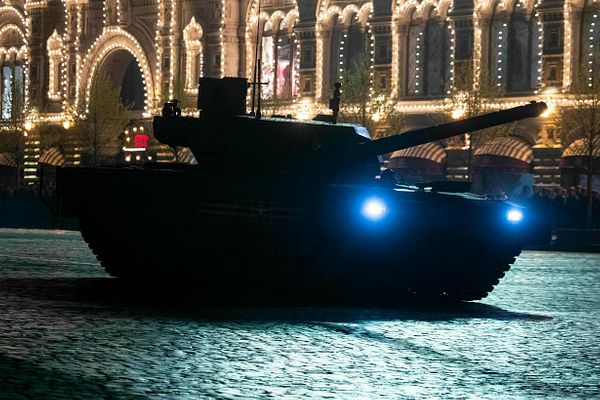Russia Develops Radar to Detect Miniature Drones
October 11, 2019

Radar developed to detect tiny drones (image: Ruselectronics)
Russia’s Ruselectronics Group has developed a radar station that can detect miniature drones measuring one square foot at a distance of up to 7.5 km, Defence holding company, Rostec said.
Called the target illuminating radar, it can detect and track small-size targets with a radar cross-section of 30 and more square centimeters (one square foot), flying at a wide range of speeds at low and ultra-low altitudes.
"The traditional methods of radar-based detection fail to reliably detect unmanned aerial vehicles with a small reflection surface. The device developed by our Ruselectronics Group successfully accomplishes this task," said Oleg Yevtushenko, Rostec Executive Director.
The radar station has been jointly developed by the Salyut Research and Production Association (part of Ruselectronics Group) and the Fakel Design Bureau of Machine-Building. The radar was made using solely Russian components. The first models of the new radar have already undergone field trials, Rostec said.
The station consists of a compact Ka-band multi-channel radar, a rotating device to provide for a panoramic view and a control notebook. The radar can be operated manually and in the automated mode. Upon detecting a target, the station transmits data to an operator’s post or a control center.

Russian anti-stealth aircraft radar: image for reference
The Russian air base at Hmeimim in Syria has come under repeated attacks with small drones. In one incident during early 2018, a swarm of tiny drones numbering over a hundred were launched at the base with more than three fourths of them falling prey to Russian Air Defences.
Since then, the base has come under repeated drone attacks which the Russian MoD claims it has successfully repelled in all cases. It is quite likely that the new drone-detecting radar was developed in response to the Russian Army’s field experience in Syria and may have been tested there too.
Small-size drones may pose a serious danger as they are capable of conducting surveillance, reconnaissance, carrying explosives or other armament and serving as an attack weapon. They can operate on their own or as part of a whole swarm of drones, Yevtushenko said.
October 11, 2019
Radar developed to detect tiny drones (image: Ruselectronics)
Russia’s Ruselectronics Group has developed a radar station that can detect miniature drones measuring one square foot at a distance of up to 7.5 km, Defence holding company, Rostec said.
Called the target illuminating radar, it can detect and track small-size targets with a radar cross-section of 30 and more square centimeters (one square foot), flying at a wide range of speeds at low and ultra-low altitudes.
"The traditional methods of radar-based detection fail to reliably detect unmanned aerial vehicles with a small reflection surface. The device developed by our Ruselectronics Group successfully accomplishes this task," said Oleg Yevtushenko, Rostec Executive Director.
The radar station has been jointly developed by the Salyut Research and Production Association (part of Ruselectronics Group) and the Fakel Design Bureau of Machine-Building. The radar was made using solely Russian components. The first models of the new radar have already undergone field trials, Rostec said.
The station consists of a compact Ka-band multi-channel radar, a rotating device to provide for a panoramic view and a control notebook. The radar can be operated manually and in the automated mode. Upon detecting a target, the station transmits data to an operator’s post or a control center.
Russian anti-stealth aircraft radar: image for reference
The Russian air base at Hmeimim in Syria has come under repeated attacks with small drones. In one incident during early 2018, a swarm of tiny drones numbering over a hundred were launched at the base with more than three fourths of them falling prey to Russian Air Defences.
Since then, the base has come under repeated drone attacks which the Russian MoD claims it has successfully repelled in all cases. It is quite likely that the new drone-detecting radar was developed in response to the Russian Army’s field experience in Syria and may have been tested there too.
Small-size drones may pose a serious danger as they are capable of conducting surveillance, reconnaissance, carrying explosives or other armament and serving as an attack weapon. They can operate on their own or as part of a whole swarm of drones, Yevtushenko said.











